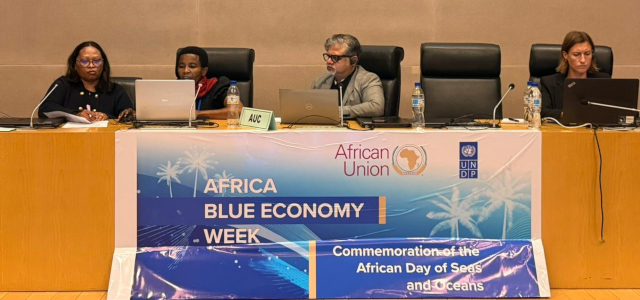The USD 9 million initiative, which will be implemented over a period of 3 and a half years, is designed to transform livelihoods and ecosystems across six island nations, namely Cabo Verde, Comoros, Guinea-Bissau, Mauritius, São Tomé and Príncipe, and Seychelles.
Ms. Immaculee Uwimana, GWPSA Senior Policy Advisor for the SIDS Project, explained the significance of the initiative: “What we are seeing is that African SIDS, despite their size, are pioneering scalable Blue Economy solutions. These are not only improving livelihoods at the community level but also shaping continental approaches to ocean governance. It’s proof that innovation and resilience can come from even the smallest of states.”
The project is helping the six island states to achieve integrated and cross-sectoral management of their Blue Economies.
The project is built around three key components:
1. Strengthening governance and enabling conditions: This component focuses on building the governance foundations required to transition African SIDS from sectoral and fragmented marine resource use to a fully integrated Blue Economy model. It supports governments in aligning national and regional policies with the AU Blue Economy Strategy and other global commitments such as the SAMOA Pathway and SDGs. Key activities include developing or updating policy frameworks, improving cross-ministerial coordination mechanisms, and identifying financing pathways for sustainable marine and coastal management.
2. Piloting innovative on-the-ground demonstration projects: The heart of the project lies in piloting practical, community-driven Blue Economy interventions across selected coastal sites in the six African SIDS. These pilots serve as proof of concept, showcasing how marine conservation, climate resilience, and economic opportunity can coexist. Interventions range from sustainable fisheries and eco-tourism enterprises to coastal ecosystem restoration and nature-based solutions such as reef and mangrove rehabilitation. Women and youth are positioned as active economic agents in these models, strengthening local ownership and long-term sustainability.
- Each country is pioneering context-specific interventions. In Cabo Verde, community fisheries co-management and eco-businesses are being promoted in the Baía do Inferno and Monte Angra Natural Park. Comoros is piloting aquaculture and pelagic fishing to ease pressure on fragile reefs while supporting 30,000 residents with alternative livelihoods. Guinea-Bissau is revitalising management of the Cacheu River Tarrafes Natural Park, home to West Africa’s largest mangrove forests, while promoting eco-tourism.
- Mauritius is transitioning artisanal fishers from over-exploited lagoons to sustainable offshore fishing, while Seychelles is making waves with solar-powered ice machines that lower costs, preserve fish quality, and increase earnings for small-scale fishers. In São Tomé and Príncipe, a ridge-to-reef approach is linking upland agriculture with marine planning to reduce land degradation and improve coastal ecosystem health.
3. Consolidating knowledge for replication and scale across Africa: To ensure that successful practices do not remain isolated, this component transforms pilot results and policy advances into reusable tools, learning products, and advocacy narratives. It establishes platforms—both digital and in-person—for cross-country exchange among African SIDS and with global island networks. Activities include developing knowledge products such as case studies, training modules, and policy toolkits; convening regional dialogues; and building a shared data and monitoring system.
More than 112,000 hectares of marine protected areas are being brought under improved management, and over 300,000 people—particularly women and youth—stand to benefit directly from the project.
